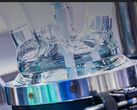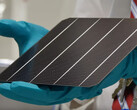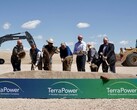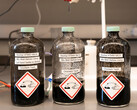Lithium-ion batteries are the backbone of modern technology, powering everything from EVs and smartphones to medical devices and countless other gadgets. But the production of graphite, a key component of these batteries, is a major challenge: China controls a staggering three-quarters of the global graphite supply chain.
Bill Gates, who is also investing in another project to turn water into fuel, has now found a way to produce graphite from methane gas through his company, Molten Industries, to help drive decarbonisation. Moltens' innovative process taps into abundant sources of methane, including those from dairy farms, wastewater treatment plants and landfills. This methane gas, which is often a by-product or waste product, is usually flared or burned, releasing harmful greenhouse gases into the atmosphere.
Pyrolysis: Transforming Methane into Graphite and Hydrogen
The company uses a technique called pyrolysis to convert the natural gas into valuable commodities: graphite and hydrogen. Pyrolysis involves heating the gas to high temperatures under controlled conditions, breaking down its molecular structure and creating the desired products - using renewable electricity and without producing any CO2 emissions.
Cost-Competitive Graphite: A Game-Changer for Battery Production
The start-up also claims that its graphite is cost competitive with other sources. Typically, crystalline carbon is either mined or synthesised from fossil fuels. The project is backed by Bill Gates' Breakthrough Energy Ventures (BEV) with $25,000,000 in a first round of funding. This is at the intersection of two really important climate tech theme areas for us at Breakthrough: making batteries scaleable and more cost-effective to drive EV sales to grow, and on the other side, low-cost clean hydrogen.
- David Danielson, Managing Director of BEV
Molten Industries is currently operating a pilot reactor to demonstrate the feasibility and efficiency of its graphite production process. The company is also working to scale up its operations with plans to construct a larger facility capable of producing 500 kg of hydrogen and 1,500 kg of graphite per day. This plant is expected to be operational next year.




























